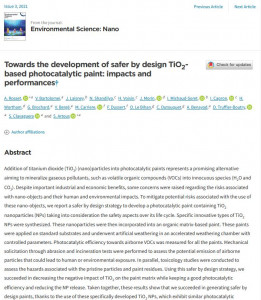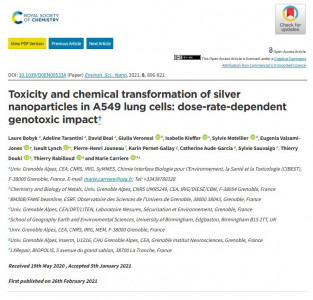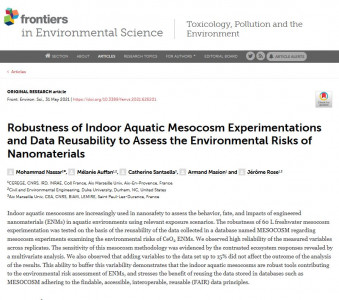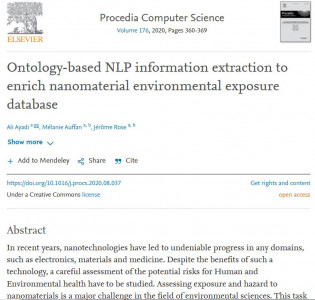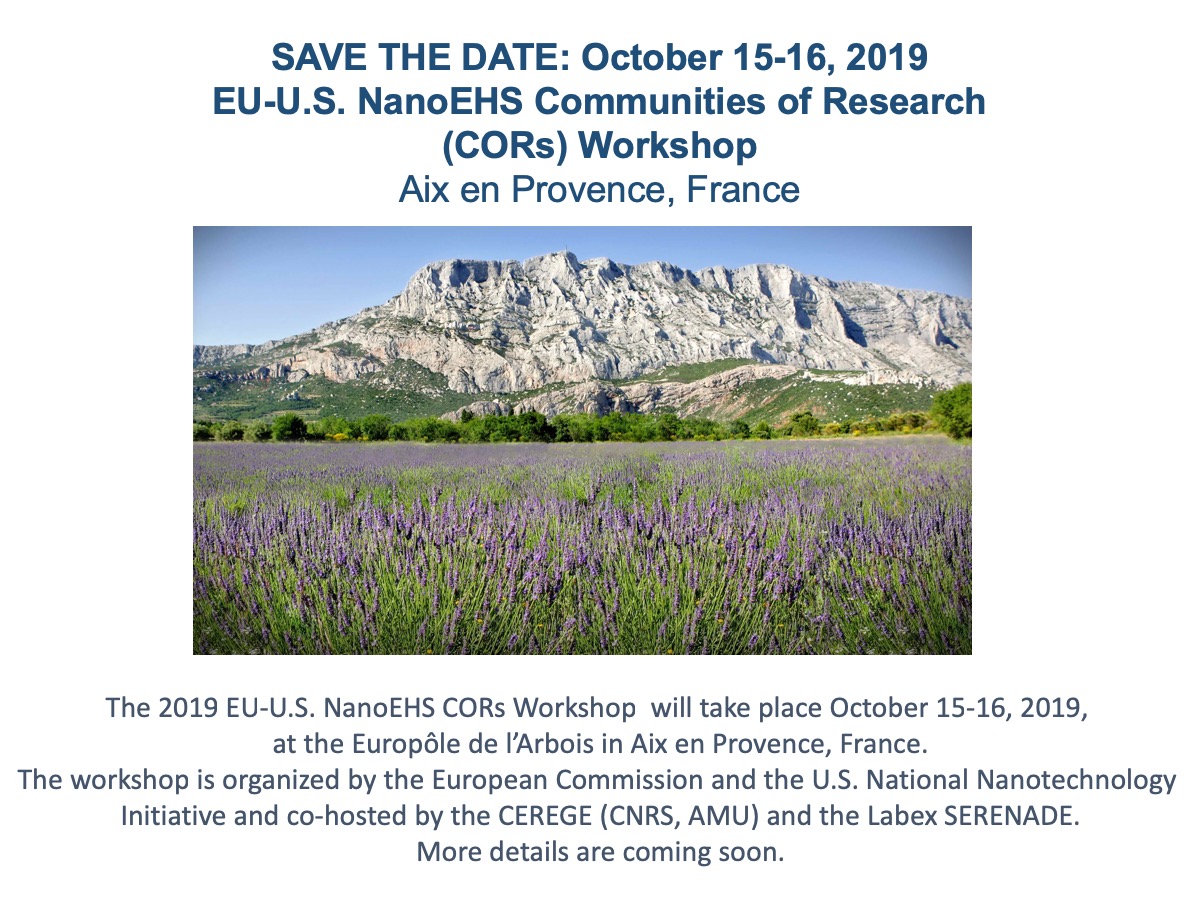
Breakout sessions will be in two sets the 15th pm and 16th am. Please find here the details of each sessions :
Characterization
Co-chairs: Vladimir Lobaskin and Anil Patri
Challenges concerning nanoplastics
- Risks of micro- and nanoplastics to humans and the environment
- Detecting nanoplastics in the environment: methods and techniques
- Detecting nanoplastics in tissues and food
- Standards for detection and quantification of nanoplastics
- EU-US coordination on nanoplastics
Challenges concerning identification of nanomaterials
- Ontologies and detabases, definitions of nanomaterials
- Development of unique identifiers for nanomaterials (ERM)
- Challenges in nanoinformatics: predictive modelling using nanomaterial characteristics
Ecotoxicity
Co-chairs: Adeyemi Adeleye (U.S.) and Susana Loureiro (EU)
- Welcome and Introduction
- "Think, Pair, Share": What are the three most important nano ecotoxicity questions still unanswered?
- Discussion and rating of the ecotox questions suggested
- Brief research/Latest finding updates
Human Toxicity
Co-chairs: Albert Duschl and Gabriele Windgasse
1. Brief introductions from each participant
2. Brief recap of last year’s activities (ENM survey/publication, last year’s COR meeting)
3. Standards in publications in nanotoxicology (Albert)
4. Essential public health services - framework for ENM and PH (Gabriele)
5. Discussion on the TiO2-opinion of ANSES (Gabriele)
6. Any other business
Risk Assessment
1. Brief introductions from each participant
Risk Management and Control
Chairs: Khara Grieger and Ulla Vogel
1. Welcome and introductions
2. Review what "risk management and control" means
3. Introduce the International Risk Governance Council (IRGC)'s Emerging Risk Guidelines, and proposed 6 overall options for risk management of an emerging risk
4. Break-out activity #1: Risk Management In Practice for Nano-Enabled Consumer Product
- Split into smaller teams, of 3-5 people/team
- Vote for best topic to explore as proposed by different teams (e.g., nanomaterials used in food, clothing, energy)
- After selecting a topic to explore, each team will be assigned to come up with specific examples of how a company/organization can develop risk management practices according to each of the IRGC's risk management options (1 option per team)
- Each team reports back to the rest of the session, explaining the specific practices that a company/organization can develop for risk management/control
- The session will vote on the "best" or "most creative" options presented by a team
- The winning team gets a prize (bottle of wine*)!
5. Introduce the concepts of Responsible Research and Innovation
6. Break-out activity #2: Responsible Research and Innovation as a Risk Management and Control option for nano
- Split into smaller teams, of 3-5 people/team
- Each team does some research (via the internet) to identify the "best" example of a real-life nanomaterial product/application that has exhibited properties/practices of responsible research and innovation
- Each team presents their findings in a 3-5 min. PPT to the rest of the session
- The session will vote on the "best" or "most creative" example of an example of responsible research and innovation in nano
- The winning team gets a prize (bottle of wine*)!
More informations can be find on the U.S.-EU NanoEHS CORs page.
For helping you to find the venue, see the document below.






